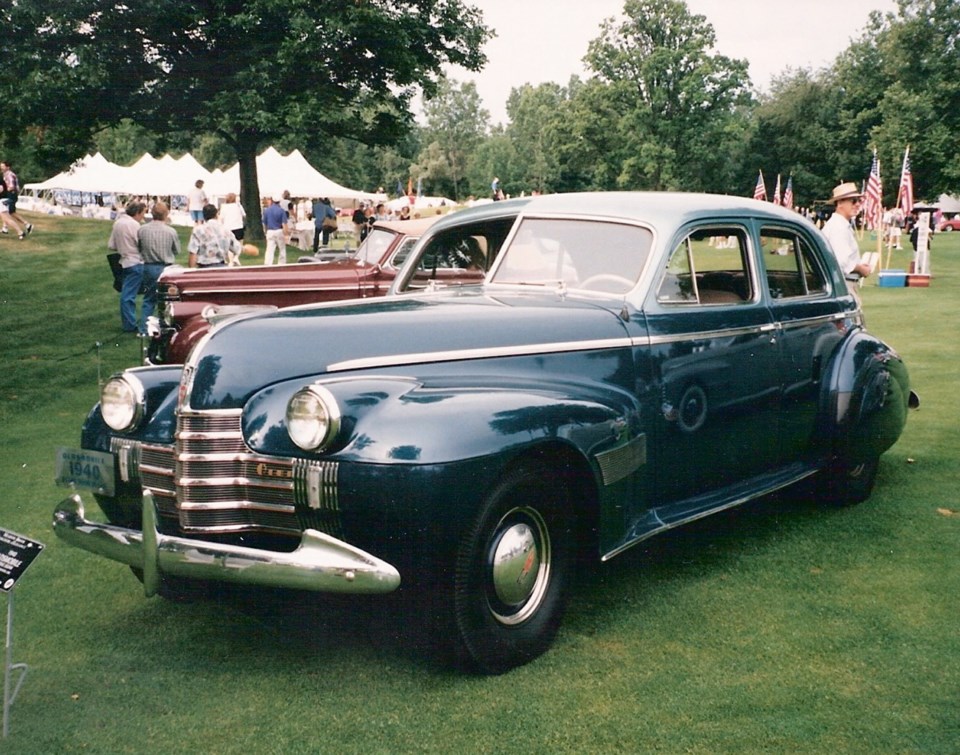When General Motors discontinued America’s oldest automobile maker, Oldsmobile, in 2004, it ended a grand tradition of technical achievement.
Oldsmobile was created by Ransom Eli Olds, who was born in 1864 in Geneva, Ohio. His father, Pliny F. Olds, moved the family to Lansing, Michigan, in 1880 to establish an engine-building and machinery-repair company.
Bright young Ransom joined the firm in 1883, and by 1887, had completed a crude steam car. An improved version followed in 1891 and was featured in Scientific American.
But Olds favoured gasoline engines, and received a patent for a “vapour engine.” He built his first gasoline vehicle in 1896, and formed Olds Motor Works on Aug. 21, 1897.
After producing a few cars, Olds relocated from Lansing to Detroit in 1900, but a year later a disastrous fire destroyed every company car except a little one-cylinder Curved Dash model.
Olds resumed building Curved Dashes, adopting the Oldsmobile name in 1901. The 318-kilogram toboggan-nosed runabout was light, strong, reliable and successful. Enticed back to Lansing by local interests in 1902, large-scale Curved Dash production made it America’s first quantity-produced car.
Oldsmobile began demonstrating its durability. Employee Roy Chapin drove a Curved Dash from Cleveland to New York in 1901 to display at the New York Auto Show. It was a sensation, and would even inspire a famous song, In My Merry Oldsmobile, by Gus Edwards and Vincent Bryan.
The skeletal Curved Dash “Pirate” reached 87.5 km/h on Ormond Beach, Florida, in 1903, a class record. Two Curved Dashes, “Old Steady” and “Old Scout,” were driven 6,440 km coast-to-coast in the U.S. in 44 days in 1904.
Ransom Olds left the company in 1904 over a difference with the board of directors, who favoured larger cars. He established a new car company called Reo derived from his initials.
Oldsmobile introduced two-, four- and six-cylinder cars, but when financial difficulties loomed in 1908, Billy Durant bought it for his new General Motors conglomerate.
Under GM, Oldsmobile made steady progress to medium-priced models. It offered a V-8 engine from 1916 to 1923, returning to sixes in 1924.
Although losing money in the early 1930s, Oldsmobile survived the Depression with solid, reliable cars. Its 1938 “Safety Automatic Transmission” was the prelude to the 1940 Oldsmobile’s “Hydra-Matic,” the industry’s first fully automatic transmission.
Following the Second World War, Oldsmobile introduced the sturdy, compact, short-stroke, overhead-valve 135-horsepower “Rocket” V-8 in the new 1949 “88” model.
It made Oldsmobile one of the world’s best performing cars, dominating American Automobile Association and NASCAR events. The 88 helped Oldsmobile’s mid-priced sales to fourth in the industry, ultimately reaching third in 1972.
In 1961, Oldsmobile introduced its upscale compact F-85 with an aluminum 3.5-litre (215 cu. in.) V-8. It launched the Cutlass name, one of the industry’s most enduring. More significantly, it introduced the world’s first production exhaust-driven, turbo-supercharger in the 1962 Jetfire sports coupe, beating sister division Chevrolet’s turbocharged Corvair Spyder by a month.
Although Oldsmobile introduced turbocharging, bigger engines were cheaper to build and turbocharging was discontinued after a couple of years. Rover of England bought the little V-8 for its cars and SUVs.
Oldsmobile stunned the industry in 1966 with its front-wheel-drive Toronado. Not used in America since the 1930s Cord, Oldsmobile revived FWD in the U.S. and laid the groundwork for GM’s mass changeover to FWD in the 1980s.
As safety concerns rose, Oldsmobile’s 1974 Toronado was the first production car with an inflatable airbag, although it would soon disappear for more than a decade.
Driven by the 1973-74 energy crisis, Oldsmobile marketed the first modern American diesel car in 1978.
The converted 5.7-litre (350 cu in.) gasoline V-8 developed a poor reputation and was discontinued in 1985 after fuel economy concerns subsided.
The drive for better economy in the 1970s and 1980s led GM to more four- and six-cylinder engines. When GM revived twin-overhead-camshaft, four-valves-per-cylinder engines following the star crossed 1975-76 Chevrolet Cosworth Vega, Oldsmobile developed the “Quad-4.” This 150 horsepower, 2.3-litre inline four appeared in the 1988 Oldsmobile Cutlass Calais.
Following the GM trend, Oldsmobile gradually phased out rear-drive, ending with the 1990 Cutlass. Its Bravada SUV arrived in 1991, although not in sa���ʴ�ý.
In 1995, Olds reached back to its V-8 days and introduced the luxury-class Aurora with a 4.0-litre version of Cadillac’s Northstar double-overhead-cam, 32- valve V-8 driving the front wheels.
Oldsmobile’s demise in 2004 marked the end of not only the oldest name in American automobiles, but one with a legacy of engineering innovation including turbocharging, fully automatic transmission, modern American front-wheel drive and airbags.



